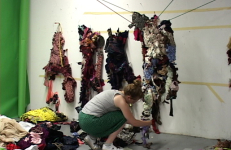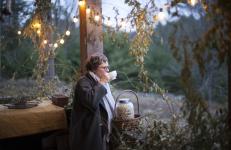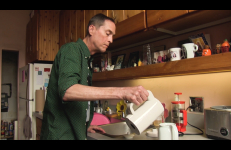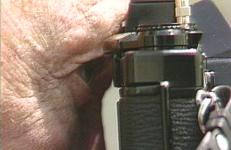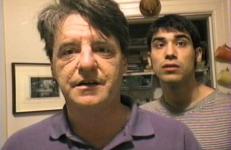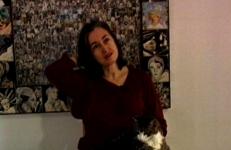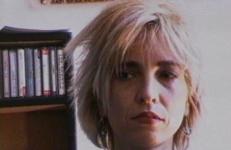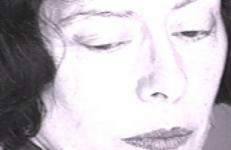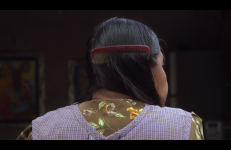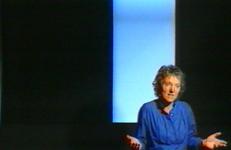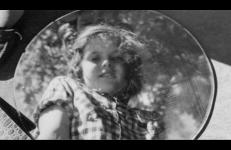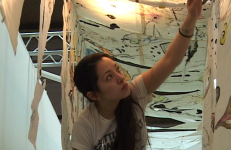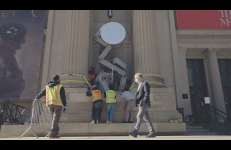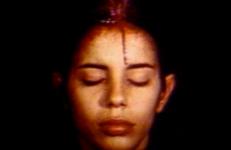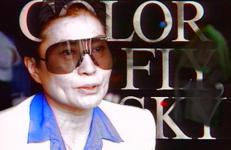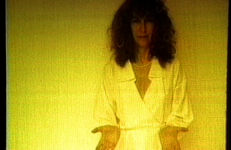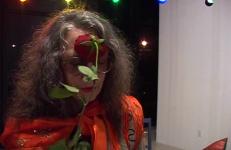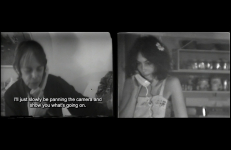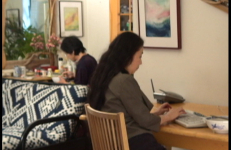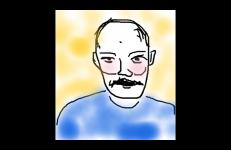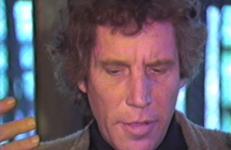This film observes six art students working in their studios in parallel. It offers a rare glimpse into the inside of art school studios.
Artist Portraits
J. Morgan Puett is an internationally renowned artist living on a 95-acre compound in the deciduous forests of northeastern Pennsylvania. Touching on ideas of creative domestication, radical pedagogy, and a critical engagement with one’s environment, Ms. Puett describes her unique home, which she calls Mildred’s Lane.
“It (J. Morgan Puett: A Practice of Be(e)ing) tells a unique story of an important artist that truly lives her art. It’s an exclusive biography of a woman who is widely known to the art world but, as yet, undiscovered by our culture.”
—Roderick Angle
A portrait of New York author Joe Westmoreland. Joe is reading from his short story Sweet Baby Joe. This video was shot in 2014 in Joe's Chelsea loft, and the reading was recorded in 2016.
A pioneer of the small-format camera, Andre Kertesz’s photographic vision shaped the course of contemporary photojournalism. Self-taught and non-conformist, he began photographing in Hungary in 1912 and remained there until 1925, at which time he moved to Paris. In 1936 he moved to New York City, where he felt displaced and forgotten. It wasn’t until 1964 that he was “rediscovered” and began showing in London, Paris, and New York. This video was shot five weeks before Kertesz’s death in 1985 at the age of 91.
I arranged a visit to poet/novelist Kevin Killian’s South of Market apartment in San Francisco to shoot a portrait of him, and when I arrived he had a guest, poet Cedar Sigo. They had corresponded earlier, but were meeting for the first time, and Cedar agreed to participate in our video shoot. This is perhaps the least planned, most verité and documentary of the videos about writers so far. Our immediate plan was for Kevin to read one of Cedar’s poems and for Cedar to read one by Kevin.
Joyce Kozloff was at the forefront of the 1970s pattern and decoration movement—a feminist effort to incorporate typically “feminine” and popular decorative arts into the fine arts. She has been involved with public art and murals for more than two decades. In this video, Kozloff prepares and installs her mural Around the World on the 44th Parallel, which features sections of maps from 12 cities around the world on the same latitude. The work was constructed at the Tile Guild in Los Angeles and installed at the library at Minnesota State University-Mankato.
Laurie was inspired by Laurie Weeks’ uncanny ability to simultaneously embody her characters and write them from a clear distance. The text in question is just a few paragraphs from a draft of the novel Zipper Mouth, more than ten years in the making, and published by the Feminist Press.
In the early 1990s, I went to a reading by Leslie Scalapino at Intersection for the Arts in San Francisco. I could not understand the writing, which can seem difficult and unwieldy to a reader unaccustomed to language poetry, and understood less the more I tried. After a certain point in the reading I stopped trying to figure it out and I let the words seep in. My reward was an effortless understanding of how her poetry works.
The “greca”, the meander, is the main symbol weaved in the textiles made by the Navarro sisters, from Santo Tomás Jalieza, México. A geometrical form of an endless braid of diamonds, the “greca” represents corn (an entity worshiped by the pre-hispanic civilisations of Mesoamerica). It stands for sustenance, but materialises as well the feminine power of producing abundance and fertility - the textiles displaying this ongoing motives could be read as invocations for life and growth.
The Luminous Image was an international exhibition of video installations held in the fall of 1984 at the Stedelijk Museum in Amsterdam.
This 12-minute video by Tom Palazzolo and Chicago writer Jack Helbig tells the story of the recently discovered Chicago street photographer Vivian Maier. Though she was unknown in her lifetime, her extensive body of work is rewriting the history of post-World War II American street photography. The video, told from the point of view of Maier herself, recounts her life and work, from her childhood in France to her move to NYC in 1951 and subsequent relocation to Chicago, where the majority of her work was done.
Maya Onoda, a young Japanese artist, transforms everyday materials into art, referring to them as her “nomadic home.” She finds beauty in mundane objects and gives them new life through her creative process. Living away from her home country, Onoda views this approach as deeply rooted in her Japanese culture and influenced by her mother.
This film originated as an expanded portrait of artist Carol Bove as she created four monumental sculptures commissioned by the Metropolitan Museum of Art. One week after filming began, New York City went into its first pandemic lockdown. Filmed against the backdrop of the progressing pandemic, Medium evolved into a meditation on materiality and the artist as a medium through which ideas move into the world.
Performance artist/sculptor Ana Mendieta used the raw materials of nature: water, mud, fire, rock, and grass. The consciousness of her politics and the poetics of her expression fill her work with an emotionally charged vision that is powerfully conveyed in this posthumous video profile. Drawing upon the raw spiritual power of Afro-Cuban religion, Mendieta used her art as a ritualistic and symbolic activity to celebrate the forces of life and the continuum of change.
Performance artist/sculptor Ana Mendieta used the raw materials of nature: water, mud, fire, rock, and grass. The consciousness of her politics and the poetics of her expression fill her work with an emotionally charged vision that is powerfully conveyed in this posthumous video profile. Drawing upon the raw spiritual power of Afro-Cuban religion, Mendieta used her art as a ritualistic and symbolic activity to celebrate the forces of life and the continuum of change.
Annette Michelson is a founding editor of the journal October and former professor of cinema studies at New York University. Before starting October, Michelson was the film critic for Artforum. Michelson’s influential work has focused on modernity, Russian and French avant-garde film, and American underground cinema.
Lars Movin presents a video portrait of artists who have radically disrupted our conception of art since the 1960s. A large part of the video was made in Venice in 1990, when many of the original Fluxus artists met to hold a large exhibition in connection with the Biennale. The tape includes interviews with most of the leading Fluxus artists, documentation of their works, and clips from videos and films made during the 30 years of this ungovernable art form.
A video collage that chronicles the issues and events that arose in Linda M. Montano’s life while she devoted a year to each of the seven chakras. Beginning as a piece devoted to themes of commitment and limitation, the work becomes a fascinating hybrid of art and life, as Montano experiences the onset of menopause, her mother’s death, her choice to enter and then leave a convent, the suffering of a stroke, and thoughts of her own death—all within the structural confines of an intense work of art.
Linda M. Montano: 14 Years of Living Art is a video catalog of the artist’s exhibition, performance and workshop in Montreal in 2003. Produced in the context of a retrospective exhibition at the Liane and Danny Taran Gallery, the video presents a close view of Montano’s signture art/life counseling performance, interviews with participants, and views of the artworks in situ. It also documents Montano’s performance pedagogy during her all-night sleepover workshop which was collaboratively hosted by La Centrale and Rad’a.
Wendy Clarke's videos frequently feature unscripted dialogue, inviting speakers to create a video diary or to share their thoughts on a topic, such as love. This approach often results in sincere and honest portraits of the speakers. In Mother and Daughter Soap Opera, Wendy focuses her video diary on her relationship with her mother, Shirley Clarke. Both women set up a camera at their respective homes and recorded their end of a phone conversation between them: Wendy in New York City and Shirley in Los Angeles at the time.
Eiko & Koma's second son Shin Otake created this video for the occasion of the 2004 American Dance Festival Scripps Award ceremony. Shin edited and narrated the video to convey Eiko & Koma's history and the concepts behind their works.
In 1988 the World Financial Center in lower Manhattan asked artists and architects to produce installations that centered on “the rapid development of the modern city and its enormous impact on how people live and work” for the New Urban Landscapes exhibition. MICA-TV produced profiles of the artists whose work was featured in the show, including Vito Acconci, Dennis Adams and Andrea Blum, Joel Otterson, Kawamata, Mierle Laderman Ukeles, Jon Kessler, Jean Nouvel, Stephen Willats, Martha Schwartz, and Haim Steinbach.
Made using voicemails the Kuchar brothers left on her home answering machine, the artist reveals George and Mike in all their candid honesty leading up to and following George’s untimely death in 2011. McGuire floats their voices along a river of digital scribbles and her own voice in singer/songwriter mode. The beauty of the piece lies partly in how the voicemails, used as-is and chronologically, contain an entire narrative about love and loss in a DIY style reminiscent of the Kuchars.
Dennis Oppenheim was a prominent figure in various art developments throughout the ’70s. Oppenheim moved through body/performance art and related video work to earthworks to his current large-scale “factories.” In all of his work, the transference of energy is an underlying concern.




